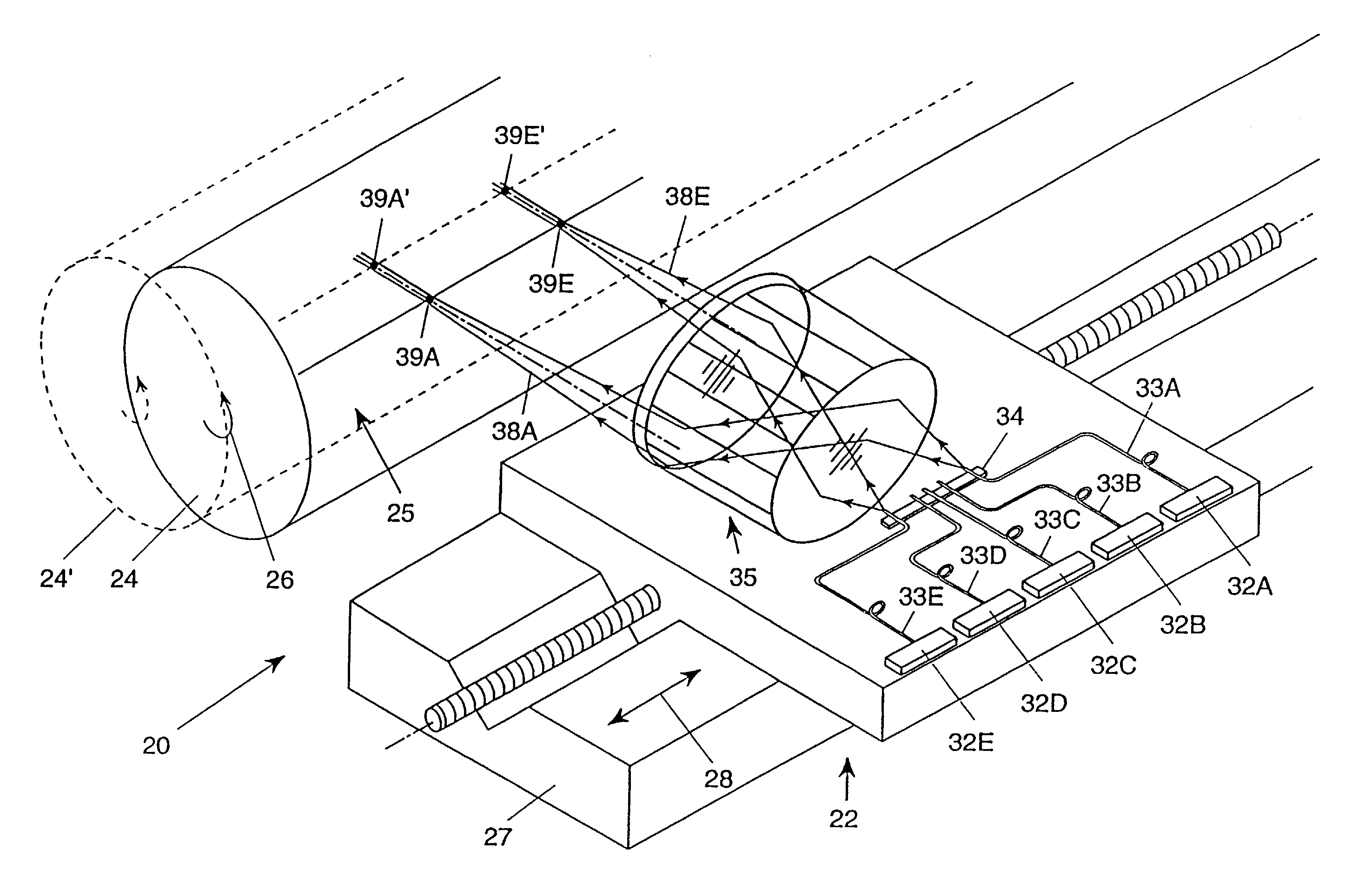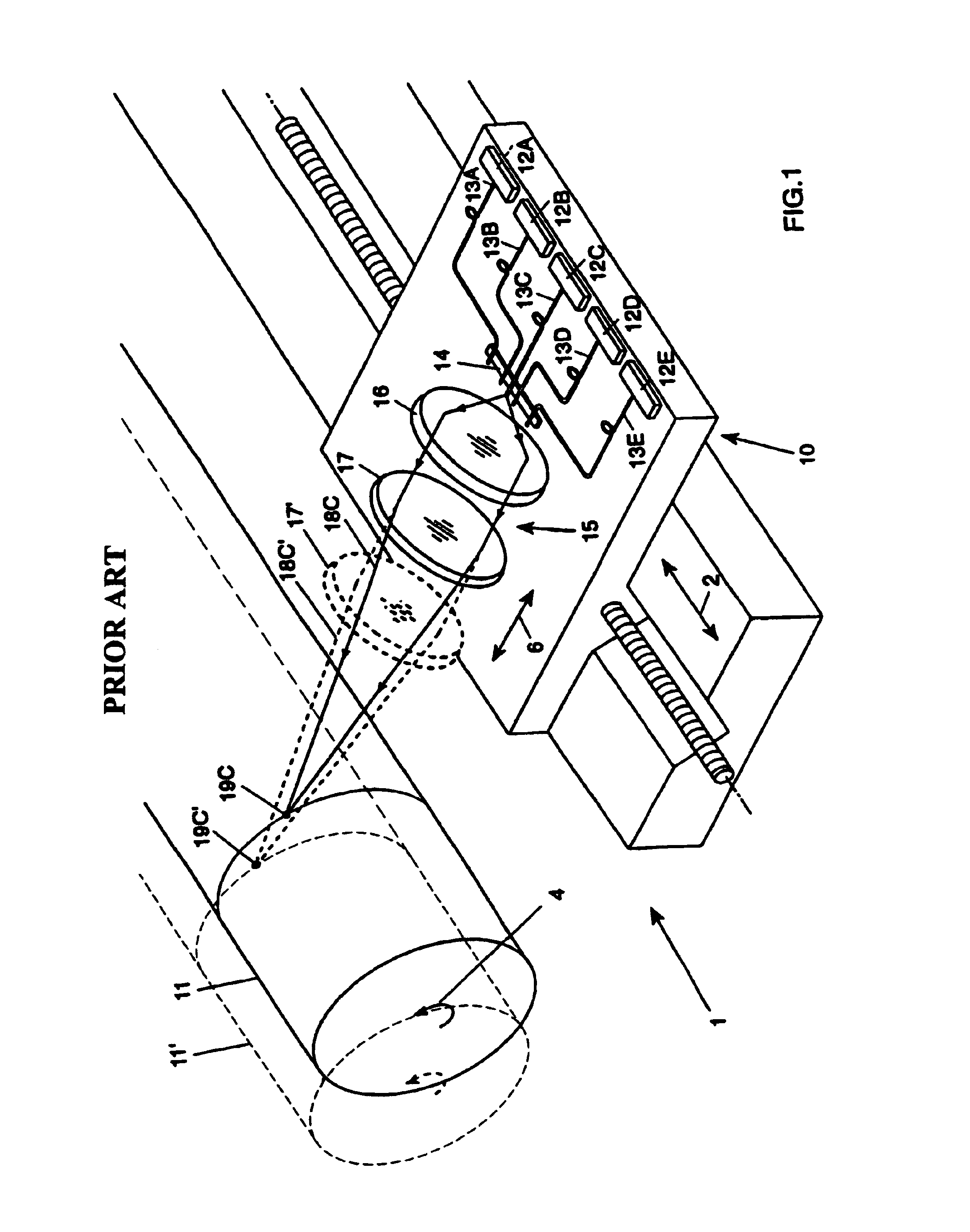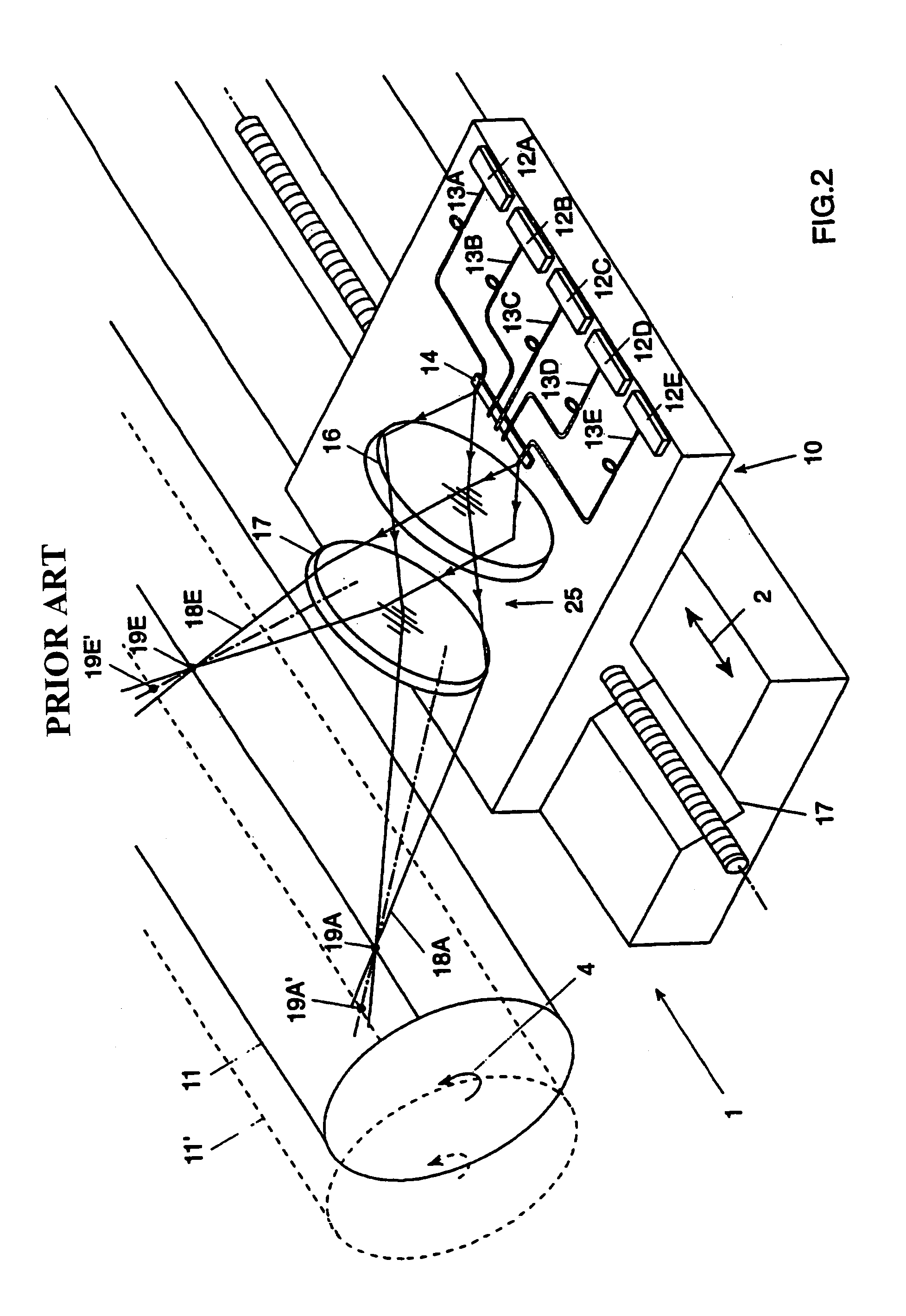Imaging apparatus for exposing a printing member and printing members therefor
a printing member and imaging apparatus technology, applied in the field of lithographic offset printing, can solve the problems of prone to mechanical failure, and increasing the cost and complexity of imaging apparatus, so as to reduce the distance between the surface coating layer and the inked image, save time and labor costs, and achieve the effect of reducing the cost of imaging apparatus
- Summary
- Abstract
- Description
- Claims
- Application Information
AI Technical Summary
Benefits of technology
Problems solved by technology
Method used
Image
Examples
example 1
[0092]The following coating formulation was prepared as a mixture (all numbers designating parts in the formulation are in parts by weight of the entire formulation);
[0093]
Neorez 9679 (aqueous dispersion of polyurethane - Zeneca50partsCorp.)Direct Black 19 INA dye solution (Zeneca Corp.)100partsTriton X-100 (Iso-Octylphenoxypolyethanol sold by BDH0.9partsPoole, Dorset, England)Tint-Ayd NV7317 (aqueous black dispersion - Daniel88partsProducts Company)2-Butoxy ethanol8partsNeocryl ® CX-100 cross linking agent (Zeneca Corp.)8partsAntara 430 (vinylpyrrolidone / styrene copolymer - GAF,50partsCorp., Wayne, New Jersey)Water (distilled)50parts
[0094]This mixture was coated onto 175 micron thick Melinex 339 base polyester sheet to a weight of 4 grams per square meter and dried for three minutes at 140° C. The coating was left for one week, during which it became increasingly resistant to rubbing with or without solvent (isopropanol).
[0095]The coating was then treated with a proprietary silicon...
example 2
[0099]A solvent based two component polyurethane was used as a pre-coating on a 175 micron thick Melinex 339 polyester sheet. The polyurethane components, Adcote 102A (Morton Adhesives Europe) and Catalyst F (Morton Adhesives Europe), were mixed in the ratio of 100 parts to 6.5 parts by weight. The mixture was then diluted with 80 parts by weight of methyl ethyl ketone, and the resultant mixture was coated on the Melinex 339 sheet with a wire wound rod, forming the pre coating. This pre-coating was dried in an oven for two minutes at 120° C. to a dry coating weight of one gram per square meter. The pre-coating was kept for a day before coating the next layer.
[0100]The following formulation was then prepared as a mixture (all numbers designating parts in the formulation are in parts by weight of the entire formulation);
[0101]
Desotech EO48102partsFlammruss 101 Carbon50.4partsToluene186partsDibutyl Phthalate5parts
[0102]The mixture was subject to ball-mill mixing for 6 hours and then 1 ...
example 3
[0103]The following mixture for a first coating was made up (all numbers designating parts in the mixture are in parts by weight of the entire mixture):
[0104]
Tynt-Ayd 1379 (Daniel Products Company)97.5partsToluene105partsNeocryl CX-100 Cross linker1.3parts
[0105]The mixture was coated on 175 micron thick Melinex 506 sheet and dried to a coating weight of 5 grams per square centimeter.
[0106]The following silicone mixture (all numbers designating parts in the mixture are in parts by weight of the entire mixture) was then prepared:
[0107]
SS4331 (GE Silicones-General Electric Company,330partsWaterford, New York) 0SS8010 (GE Silicones)4.7partsSS 4300C (GE Silicones)3.3partsToluene670parts
[0108]The mixture was coated onto the first coating to a weight of 1 gram per square meter and dried at 150° C. for 5 minutes.
PUM
 Login to View More
Login to View More Abstract
Description
Claims
Application Information
 Login to View More
Login to View More - R&D
- Intellectual Property
- Life Sciences
- Materials
- Tech Scout
- Unparalleled Data Quality
- Higher Quality Content
- 60% Fewer Hallucinations
Browse by: Latest US Patents, China's latest patents, Technical Efficacy Thesaurus, Application Domain, Technology Topic, Popular Technical Reports.
© 2025 PatSnap. All rights reserved.Legal|Privacy policy|Modern Slavery Act Transparency Statement|Sitemap|About US| Contact US: help@patsnap.com



